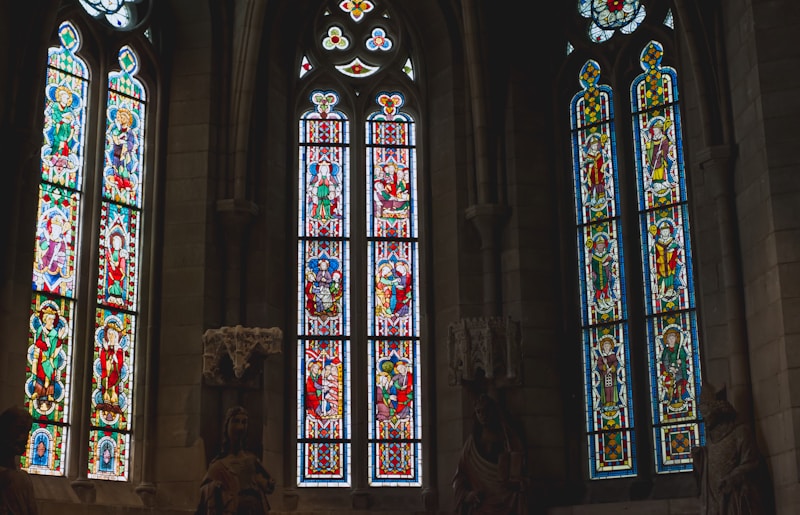Unlocking the Secrets of Heritage-Inspired Luminosity: A Journey Through Timeless Elegance
Unlocking the Secrets of Heritage-Inspired Luminosity: A Journey Through Timeless Elegance
Understanding Heritage-Inspired Luminosity
In the vast world of design and Aesthetics, a fascinating concept has emerged that captivates both artists and consumers alike: Heritage-inspired luminosity. This term encapsulates a unique blend of traditional craftsmanship and contemporary brilliance, creating a sensory experience that resonates through various domains including architecture, fashion, and interior design. In this article, we aim to delve deep into the essence of heritage-inspired luminosity, exploring its historical significance, artistic value, and modern applications.
The Significance of Heritage in Modern Aesthetics
The term 'heritage' evokes thoughts of tradition, cultural identity, and the artistry of generations past. In our fast-paced world, where trends change at the speed of light, the revival of heritage-focused designs brings a sense of stability and nostalgia. Heritage-inspired luminosity takes this a step further by incorporating techniques and styles from our ancestors with modern innovation. This blend results in stunning visual effects characterized by warmth, depth, and a distinct glow that appears to come from within the materials themselves.
The Elements of Luminosity
To appreciate heritage-inspired luminosity, it's essential to understand its primary components. Luminosity in design is achieved through the interplay of light, color, and texture. Materials often used to achieve this effect include:
- Glass: Translucent materials that allow the light to play within their structure.
- Metal: Polished surfaces that reflect light and create dynamic compositions.
- Textiles: Fabrics that capture and diffuse light through their weaves and colors.
Heritage-Inspired Techniques: A Historical Overview
Many traditional techniques have been reinterpreted in modern applications to create heritage-inspired luminosity. Let's explore some of these incredible methods:
| Technique | Description |
| Stained Glass | This ancient art form involves piecing together colored glass to create symbolic imagery that interacts beautifully with natural light. |
| Murano Glass Blowing | Originating from Venice, this technique produces delicate glass objects known for their brilliance and color, showcasing a luminous effect. |
| Ikebana | Japanese floral arrangement emphasizes balance and harmony, often using natural elements that create an ethereal glow in their presentation. |
| Cloisonné Enamel | Chinese artisans use fired enamel to create intricate patterns that shine brilliantly, a testament to craftsmanship passed through generations. |
Modern Applications of Heritage-Inspired Luminosity
Today, many designers and artists incorporate these heritage-inspired techniques into their work. From architectural facades to fashion accessories, the influence can be seen in various sectors:
- Architecture: Modern buildings often introduce stained glass elements in windows to evoke a sense of antiquity while benefiting from contemporary designs.
- Fashion: Designers are embracing textile techniques rooted in history, using traditional embroidery methods to infuse garments with luminosity.
- Interiors: Home decor featuring heritage-inspired lighting fixtures and artworks can transform spaces into illuminated sanctuaries of comfort and nostalgia.

Typically, the use of rich colors and fine craftsmanship in heritage-inspired designs can create mesmerizing pieces that enhance any environment.
The Global Influence of Heritage-Inspired Luminosity
Heritage-inspired luminosity transcends geographical borders. Many cultures celebrate their heritage through similar luminous techniques, resulting in a rich tapestry of styles. Let’s explore how different cultures express this concept:
- Europe: The renowned stained glass of Notre-Dame in France and the intricate mosaics found in Italy's architectural wonders showcase the depth of European craftsmanship.
- Asia: Countries like Japan and China have long histories of artisanal techniques that emphasize luminosity through natural materials, such as silk and porcelain.
- America: In Canada and the U.S., indigenous art embraces natural elements and cultural storytelling into vibrant tapestries and installations that radiate light.
Aesthetic Appeal: Color Theory in Luminosity
Color plays a vital role in achieving the desired effect of luminosity. When designing with heritage in mind, color choices are not just visual statements but emotional narratives. Here are some color theories relevant to heritage-inspired design:
- Warm Colors: Reds, oranges, and yellows evoke feelings of warmth and comfort, fostering a welcoming atmosphere.
- Cool Colors: Blues and greens provide a calming effect, often associated with nature, lending tranquility to spaces.
- Monochromatic Schemes: Utilizing varying shades of one color can create depth and unity, enhancing the luminous quality of a piece.
Understanding these color permutations helps designers craft spaces that resonate emotionally while embodying heritage-inspired luminosity.
Key Considerations When Embracing Heritage-Inspired Luminosity
When integrating heritage-inspired luminosity into your design projects, several factors must be kept in mind to ensure the final result remains harmonious and respectful of its origins:
- Authenticity: Always strive to use genuine techniques and materials, respecting the cultural significance they hold.
- Balance: Blend heritage techniques with modern elements to create a cohesive aesthetic that pleases the eye without appearing disjointed.
- Context: Consider the surrounding environment; your design should enhance rather than clash with existing architecture and decor.
Conclusion: Embracing the Timeless Essence of Heritage-Inspired Luminosity
In a world that often prioritizes speed over substance, heritage-inspired luminosity offers a much-needed reminder of the beauty found in tradition and craftsmanship. By integrating historical techniques with modern innovation, artists and designers can create luminous experiences that pay homage to their cultural heritage while appealing to contemporary sensibilities. As you embark on your journey of discovery in this field, remember to respect the origins of your inspirations while fostering creativity and innovation. Embrace the glow of your artistic endeavors, and let the light of heritage inspire your creations.
